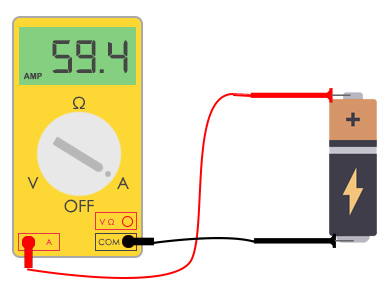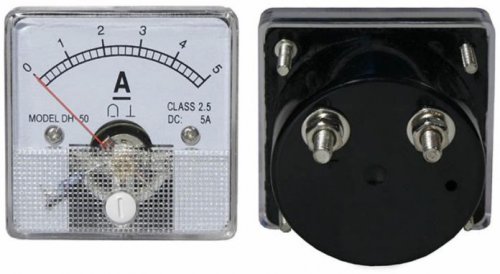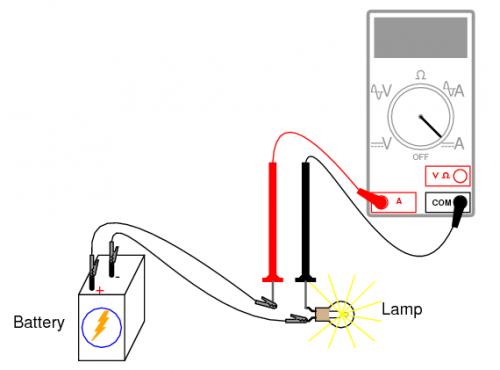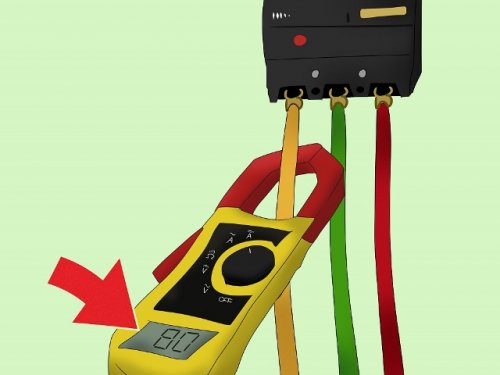Current measurement with an ammeter
An electrical measuring device, an ammeter, is used to measure the magnitude of current in DC and AC circuits. The ammeter is connected to the circuit in series with the current source.
Since current is an ordered movement of charged particles along a wire (through the cross-section of the wire), in order to measure its value, it is necessary to pass the measured current through an ammeter as well. Therefore, the ammeter is included exactly in the break of the circuit under study, when it is necessary to measure the current, and in no case parallel to it.
In the output circuit of a modern ammeter, there is usually a shunt — a calibrated resistor with increased accuracy and a relatively small resistance (a few fractions of an ohm), on which the electronic circuit of the device measures the voltage drop and indirectly calculates the current from it (or as they say — amperage).
The ammeter, as a separate measuring device or as one of the functions of a multimeter, has several ranges for measuring current. The range is selected using a switch located on the front panel of the device.
Usually one of the following values can be selected on the multimeter (the maximum value for the range): 200μA, 2mA, 20mA, 200mA, 10A, etc. In addition, some multimeters have the ability to measure DC, AC, or both DC and AC.
The type of current is also selected on the scale of the switch. For measuring current and voltage, multimeters have two separate test leads: one for measuring voltage, the other for measuring current. The third is the common wire, which remains in place regardless of what is being measured, current or voltage.

Connect the test leads to the appropriate jacks on the multimeter or ammeter. Turn on the device and switch it to the current measurement mode by selecting the type of current and range using the switch. If the range is unknown, then it is worth starting with the largest available value on the switch scale, then you can reduce it. Turn off the power to the circuit in which you want to measure the current.
Connect the test leads (be careful!) so that the device is included in the open circuit. Apply current to the circuit. After a few seconds, the device will show the actual value of the measured current on the display.
If the range is 10A or more, the measured current value will be displayed in amperes. If the range is, for example, 200mA, 20mA or 2mA (the order of magnitude is as follows, but in general the values on the scale may differ from these), then the display will show readings in milliamps. If the range is 200μA (or the same order) — the display will show microamps.
The ammeter should never be connected in parallel with the current source, because in this case the short-circuit current will pass through the measuring shunt inside the device, and if the current is higher than the maximum permissible for the device, the device will immediately burn out.
If the source of the current is, for example, a socket or other source with low internal resistance, it can end in tragedy with casualties, and in the best case - a rapid failure of the device.
If you need to measure the short-circuit current of a finger-type battery, it can pass harmlessly for an ammeter, but it is better not to ignore the rule of thumb for turning on the ammeter.
The ammeter is always connected in series in the circuit and only at the moment when this circuit is turned off! Users in a working circuit will themselves limit the current to the working value.
They are a special type of ammeter clamp for electric current… They have a very wide range of measured currents and cannot be switched on incorrectly. The current clamp is simply thrown into the range of the circuit section, the current you want to measure, and you immediately display the current. Current clamps are more common for measuring alternating current, but there are also models for measuring direct current (based on a Hall sensor).



